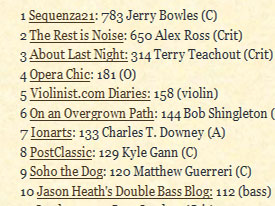The music year in Los Angeles is getting off to a good start with an exciting mini-festival by the L.A. Phil, led by David Robertson. What’s even nicer is that the Phil has given Sequenza21 readers a chance to win two tickets to next Friday’s concert, January 11, the program that appropriately includes “Sequenza X”. The contest ends tomorrow night, so enter now!
First, let me tantalize you just a little with some details of the series. Next week there will be the premiere of a new Michael Gordon work with Bill Morrison, “Dystopia”, with the Boulez “Explosante-Fixe” as the prelude. The series opens with Copland’s “The City” with film; the Varese “Ameriques” is on the program with works by Zappa and Crumb. The second program, which you readers have a chance to win tickets, opens with the Berio, followed by the Ives “Central Park”, and then works by Feldman, Benjamin and Zimmermann. There are two concerts, by visiting groups, of city songs and of electronic music. The festival includes three films with discussions at ArcLight (“Metropolis”, “Taxi Driver”, and “A Clockwork Orange”). And there will be a seminar. Click this link to read the program.
And do enter to win the tickets to the concert at WDCH on Friday, January 11. Just follow this link.


